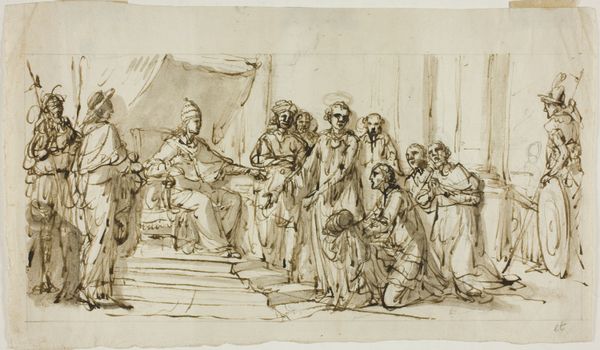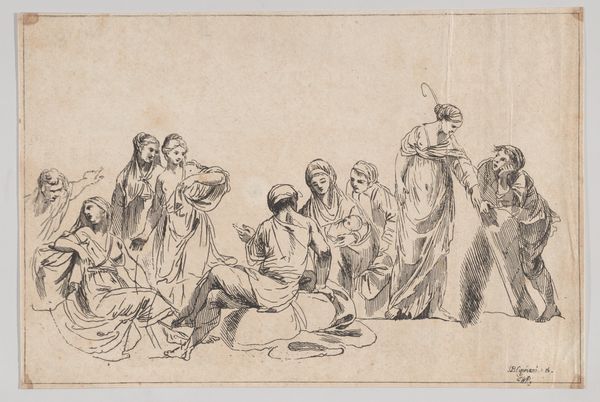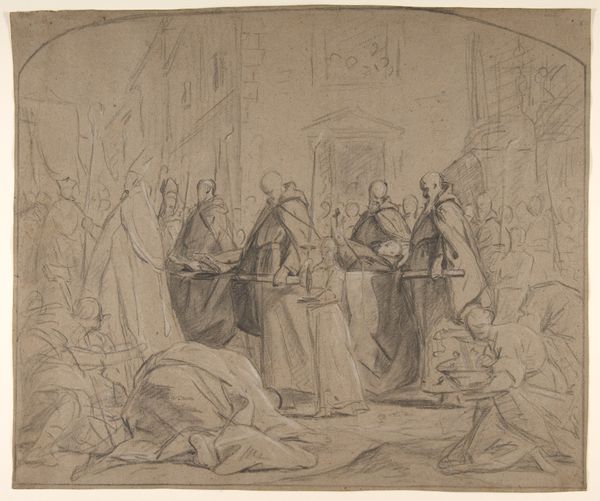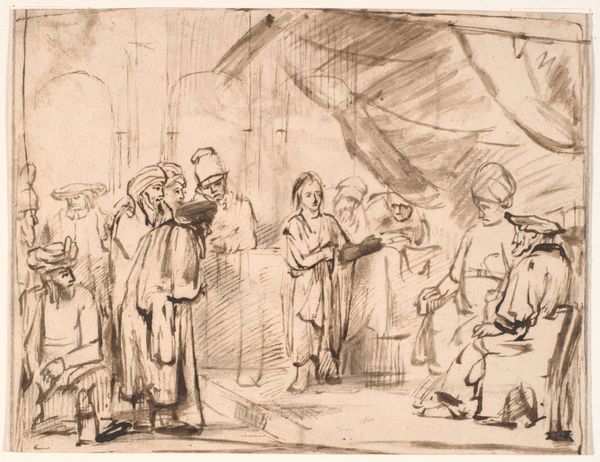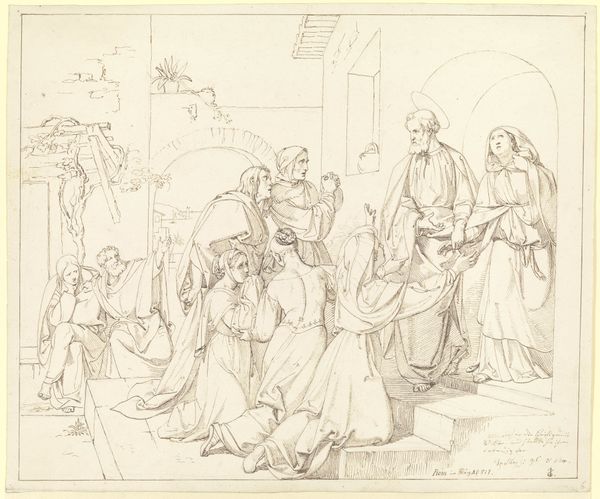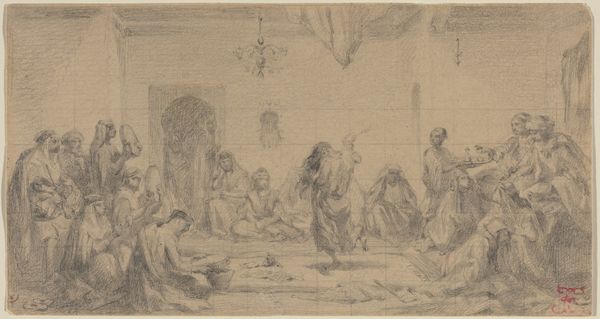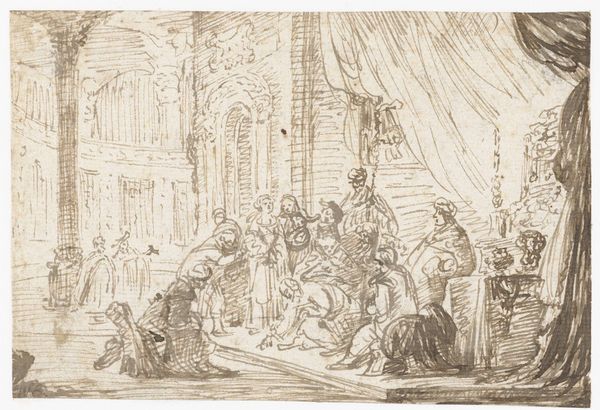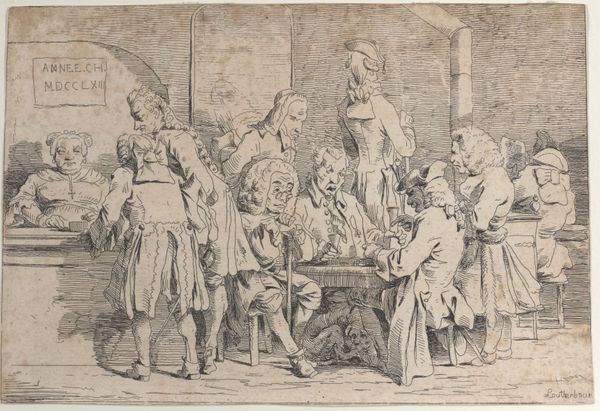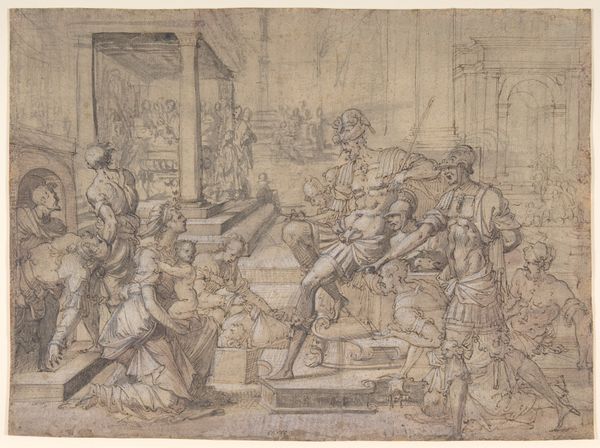
drawing, ink, pencil, pen
#
drawing
#
pencil sketch
#
figuration
#
11_renaissance
#
ink
#
pencil
#
pen
#
history-painting
#
academic-art
Dimensions: height 201 mm, width 285 mm
Copyright: Rijks Museum: Open Domain
Curator: Welcome, everyone. We're standing before a pen, pencil, and ink drawing by Jacob Hogers from 1646, entitled "Opwekking van Lazarus," or "The Raising of Lazarus". Editor: My initial impression is one of subdued anticipation, almost held breath. The monochromatic palette, predominantly gray washes, mutes the potential drama, focusing attention on form and figure instead of vibrancy. Curator: It's interesting you say that. I get a strong sense of theatre, but more like a staged tableau than a dramatic eruption. Hogers has placed the figures almost on a shallow stage, with a defined foreground and a backdrop hinting at architectural structures. The light, of course, emanates from Christ, as is tradition in scenes like this. Editor: Absolutely, the formal elements reinforce that staging. The composition adheres to classical principles, with a pyramidal grouping around Christ and Lazarus as its apex. But there’s something unfinished, provisional about the sketch-like quality of the piece that adds to this quality, isn’t it? As if Hogers is working something through, trying out arrangements… Curator: Yes, exactly! The very materiality adds to that impression! You know, many believe that Hogers, in his religious history paintings, captured that particular academic art that focused on figuration. Lazarus isn't jumping up miraculously; the viewer only perceives a quiet, private miracle. And from what I sense, his aim isn’t necessarily to make a grand, unforgettable statement but rather capture human gestures, emotional relationships… Editor: Precisely! We’re dealing with an interior psychological moment far more than a spectacle of faith, right? This more restrained take might reflect something of the religious sensitivities and artistic trends of that moment. Instead of grand Baroque flourishes, he presents us with an introspective Renaissance sentiment. Curator: So, from this glimpse, it shows the skill that lies beneath the surface, and Hogers offers more nuance than maybe he gets credit for. Editor: Agreed! The initial restraint blossoms into quiet appreciation of technique, emotion, and composition for me!
Comments
No comments
Be the first to comment and join the conversation on the ultimate creative platform.
